
Buy
Resources
Entertainment
Magazine
Community
Hemmings archive photo.
One would presume that a company that not only built the Yugo but also withstood international sanctions and a NATO bombing campaign and nevertheless continued to build cars could continue on, cockroach-like, forever. Yet Zastava in Kragujevac, Serbia, last month officially closed for good, brought down by a simple bankruptcy.
Dating back to the 1850s and the establishment of a cannon foundry in Kragujevic, the Zastava factory produced everything from arms to agricultural equipment to Chevrolet and Willys trucks until 1954, when plant workers voted to begin full-scale automobile production and set up Zavodi Crveni Zastava (Red Flag Works), under which they began assembling licensed Fiats for the Yugoslavian market.
Production ramped up quickly - up to about 82,000 cars a year in the early 1960s. Other Balkan countries took to the cars quickly, and the U.S.S.R. began importing Zastavas in the mid-1960s. Fiat designs comprised pretty much the entire Zastava lineup, from the 600 up to the 1400 and 1900 and even the Campagnola, though Zastava did eventually begin producing its own unique versions, such as the 128-based 101 and the vehicle Zastava became best known for, the 127-based Yugo.

Nearly 50,000 Yugos were sold in the United States in 1987 and Zastava was building about four times as many total at about that time. A convertible and a sport model followed, but sales slowed to a trickle in the United States by 1990, and production nosedived in 1991 after the outbreak of civil war in Yugoslavia. Trade sanctions that lasted most of the Nineties kept Zastava from exporting its cars and a NATO bombing campaign during the Kosovo War in 1999 destroyed part of the Kragujevac factory compound, which still produced arms.
Yet Zastava rebuilt, restarted production in the early 2000s, resumed exporting once the trade sanctions were lifted, and even retooled the Yugo for the 21st Century. Though it still built Fiat vehicles under license, Zastava remained independent of Fiat until 2008, when the Italian carmaker set up a joint venture with the Serbian government to purchase Zastava's assets and to produce Fiats in Kragujevac.
Photo via FCA.
That venture, FCA Serbia, continues today in the old factory, now remodeled and modernized. However, the remains of Zastava, saddled with 60 billion Serbian dinars (more than $530 million) worth of debt and disability payments to former workers, entered bankruptcy and insolvency hearings in July. That led to a virtual padlocking of the doors to the company, which still employs three people, and nationwide reflections on Serbia's automotive heritage.
"People today can not imagine how much effort workers put into building this factory," former Zastava employee Bataveljić Slavoljub told Czech site E15. "When the factory opened, no one was trained in the work that we did, so we all learned on the fly. While we built a factory to build cars, the factory in turn built us."
Serbian government officials have said they anticipate settling the Zastava bankruptcy by the end of the year.
Recent
The British motor industry is well represented on this week’s round up of successful sales on Hemmings.com. The strongest listing went to an LS V8-powered 1997 Land Rover Defender 110 custom that outperformed the market and looked to be able to well outperform a stock 110. A 1978 Aston Martin AM V8 found a new home via auction, the same fate experienced by a V12-powered 1972 Jaguar XKE Series 3 roadster. The original Jeep Grand Wagoneer was perhaps the first luxury SUV and the 1988 example sold on Hemmings.com featured low-mileage and excellent overall condition. There are few muscle cars are instantly recognizable as a Carousel Red Pontiac GTO Judge, like the 1969 model detailed below. Finally, we look at a restored 1913 Ford Model T Runabout sold from a Canadian-based collection.
For the week of May 12 through May 18, a total of 61 listings crossed the Hemmings Auctions block. Including Make Offer listings of previously ended auctions, a total of 40 cars were sold, resulting in a net 66% sell-through rate. An additional 29 cars were sold via direct Make Offer listings.
You can keep abreast of the latest consignments by subscribing to the daily Hemmings Auctions email newsletter.
1978 Aston Martin AM V8
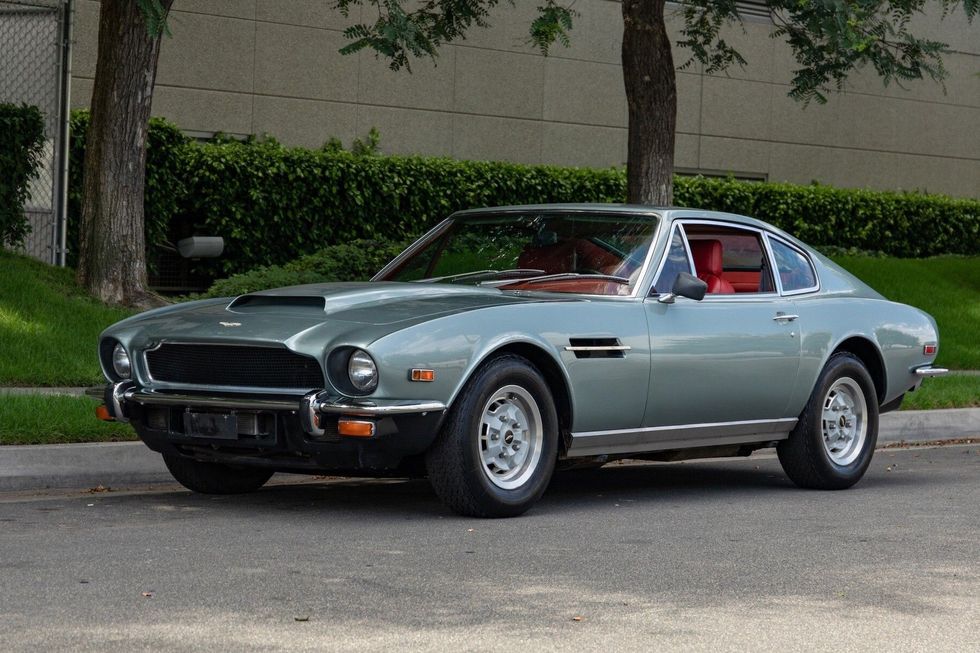
Reserve: $80,000
Selling Price: $84,000
Recent Market Range: $45,000-$80,000
Aston Martin produced some version of its V8-powered saloon from 1969 through 1989, though we are more likely to refer to the body style as a coupe on this side of the Atlantic. A beefy 5.3-liter DOHC V8 with multiple carburetors and a stout Chrysler-sourced TorqueFlite automatic very much gave the models a muscle car vibe, albeit one made with fine leather upholstery and thick wool carpets. This silver on red 1978 Aston Martin AM V8 Series III saloon, which traded hands last year via online auction for $46,988, achieved one of the highest prices seen in recent years for a coupe equipped with a standard-specification engine, particularly outside the U.K., where values are typically stronger.
1988 Jeep Grand Wagoneer
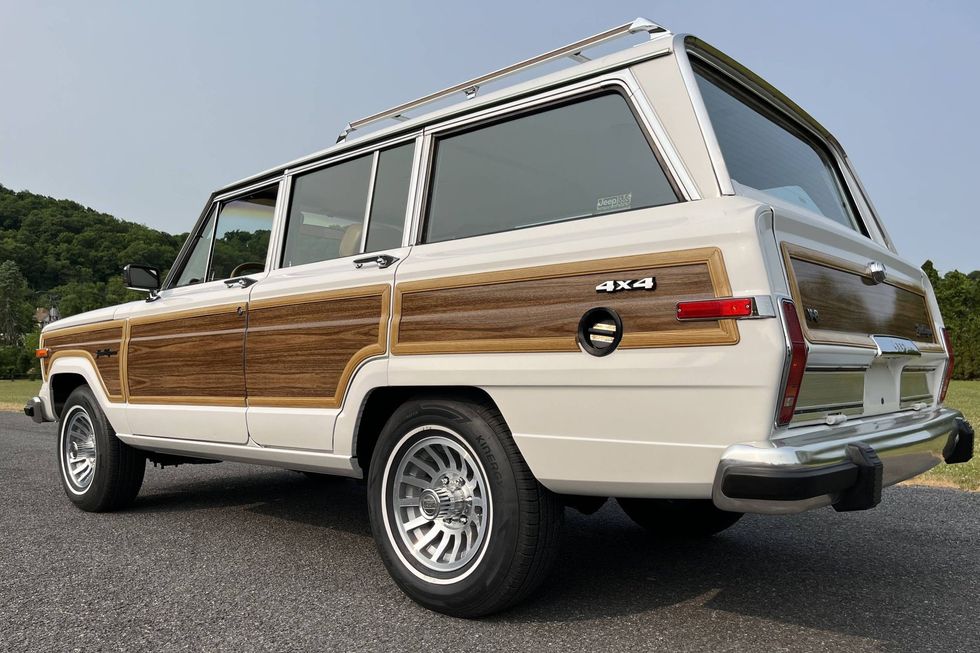
Reserve: $63,000
Selling Price: $68,775
Recent Market Range: $54,000-$75,000
Perhaps no other American vehicle has combined class and off-road capability quite like the original Grand Wagoneer, the trailblazing luxury SUV that was produced by Jeep for almost three decades. This 1988 Jeep Grand Wagoneer was submitted with just 27,417 miles showing on the odometer and plenty of notes from the seller indicating the original condition of the vehicle and all of its major components. The undercarriage, interior and engine bay photos all appeared to show an exceptionally clean example, which is notable for a rust-prone vehicle that has been in the Northeast since new. The net sale price, achieved with the 39th bid, was in line with market expectations for this very collectible vehicle.
1997 Land Rover Defender 110

Asking Price: $150,000
Selling Price: $157,500
Recent Market Range: $80,000-$150,000
The Land Rover Defender market shows no signs of slowing down, particularly as more and more examples are allowed into the U.S. via the DOT’s 25-year rule for previously banned imports. Likewise, there is a burgeoning market for what can best be described as restomodded examples, like this 1997 Land Rover Defender 110, which was powered by a modern GM LS3 V8, the same powerplant found in later C6 Corvettes. The list of what was original to this SUV might be shorter than what was changed, given the comprehensive nature of the build. Achieved via a direct Make Offer listing, the net sale price of this Land Rover was at the very top end of recent market activity for such customized Defenders.
1969 Pontiac GTO Judge
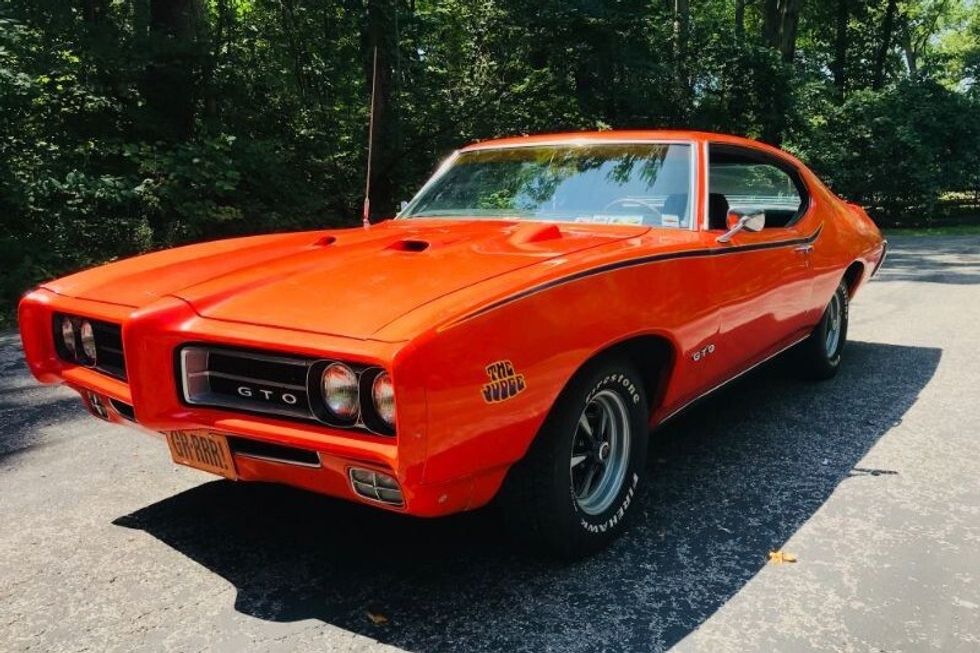
Reserve: $54,000
Selling Price: $52,500
Recent Market Range: $46,000-$62,000
This 1969 Pontiac GTO Judge ticked all the right boxes: matching numbers with photos verification of the partial VIN stamping on the engine block of the original Ram Air III V8, Muncie four-speed manual transmission, PHS documentation, and that classic Carousel Red finish and Judge decals. It looked to be in excellent overall condition, but it also appeared to have been driven and enjoyed some in recent years, with some signs of wear. And the net sale price, achieved via post-auction Make Offer listing, reflected the condition and authenticity of the car. A concours-level example, or one with a rare Ram Air IV engine for example, would likely command a premium over this one.
1972 Jaguar E-type Series III Roadster
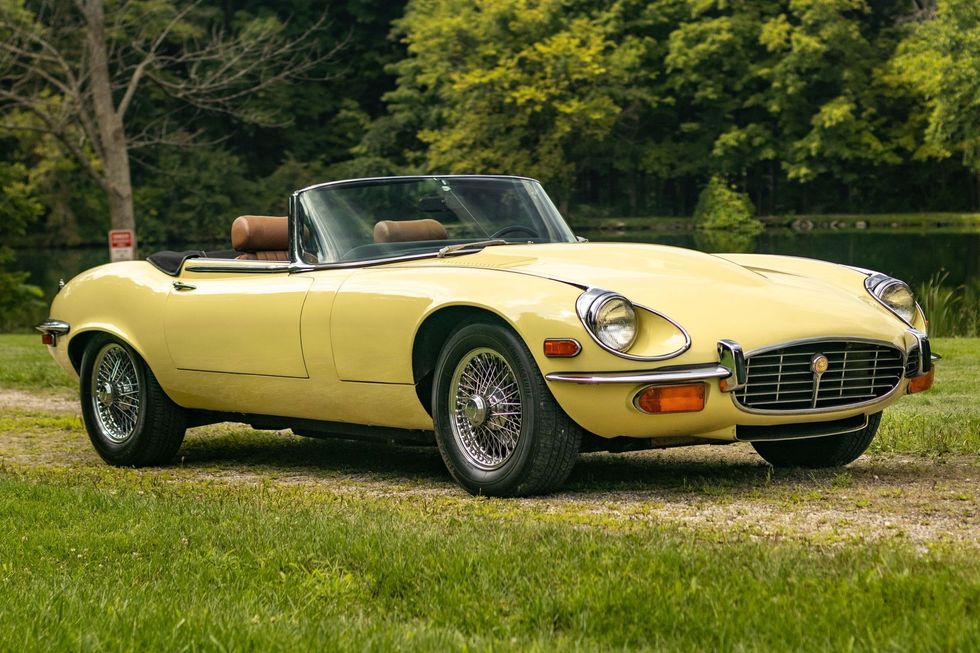
Reserve: $65,000
Selling Price: $69,825
Recent Market Range: $78,000-$115,000
The final iteration of the Jaguar XKE was a bit larger than the original and not as precisely focused on its sporting nature. Rather, with a big V12 under the hood, it was more of a GT car. This 1972 Jaguar E-type Series III Roadster appeared to have some minor wear and tear and signs of road use, but it made up for any shortcomings with what appeared to be an abundance of authenticity. The seller noted that the exterior finish, interior upholstery and engine were all original. Reflecting the low number of owners and the car’s years sitting in a museum, the odometer reading of just over 30,000 miles was also believed accurate. While the net sale price was below market expectations, it was not too far off.
1913 Ford Model T Runabout
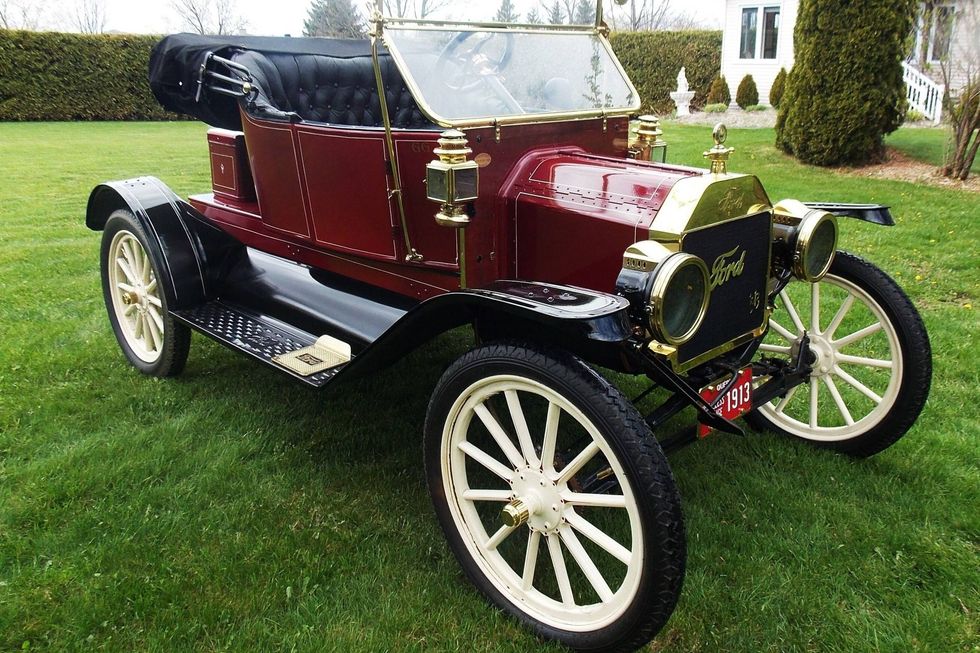
Reserve: $25,00
Selling Price: $26,250
Recent Market Range: $22,000-$36,000
There has never been a shortage of early Fords at Hemmings, dating to the earliest days of our magazine. Like any other vehicle, the most desired examples in the best condition will always attract the bidders. This 1913 Ford Model T Runabout appeared to have been restored to high level and showed only minimal signs of use. It was also equipped with an electric starter. The maroon body, black fenders and white spoke wheels nicely complemented the button-tufted black vinyl seat. The undercarriage appeared to be exceptionally clean, indicating little use for the car that was said to come from a Model T collection. The next sale price was well within the going market rate for an open-top, two-seat, early Model T.
Keep reading...Show Less
Photo: General Motors
Chevrolet made waves in ’01 when it brought back the Z06—a bona fide track-day-ready, package for America’s sports car. This hot new Corvette wasn’t exactly all-new, however. It was an evolution of the “fixed-roof coupe” (FRC) introduced in 1999 and aimed at performance-minded buyers looking for a lighter, cheaper, more rigid Corvette. A six-speed manual was the only transmission available on those earlier ’Vettes and the Z51 suspension was standard issue. Interior choices were limited to: standard buckets (optional sports seats weren’t available); and black upholstery. Niceties like the optional power telescoping column or a power passenger seat weren’t offered. Today the FRC is an unusual find, as just 4,031 were made in 1999 and 2,090 in 2000.
The Z06 took the FRC to the next level, though the tradeoff was a higher price tag: approximately $47,000 for the ’01 Z06, versus $38,000 for the ’99 FRC. For the money, buyers got the best speed parts and engineering tweaks Chevrolet had to offer: the LS6 engine, initially rated at 385 hp, then 405 hp; a six-speed manual with more aggressive transmission gearing than standard; a titanium exhaust system; thinner glass; Goodyear Eagle F1 SC tires mounted on lighter, stiffer forged aluminum wheels; less sound-deadening material; a fixed radio antenna instead of a power antenna; and a smaller, lighter battery. The car also introduced rear-brake cooling ducts integrated in the rear fenders, which would become a signature Z06 styling cue. At less than 3,200 pounds, the Z06 weighed 36 pounds lighter than the FRC, and 117 pounds lighter than the standard coupe or convertible.
One of the ultimate C5 Z06s was the 2004 24 Hours of Le Mans Commemorative Edition, acknowledging Corvette Racing’s historic 1-2 class finishes in 2001 and 2002 (also 2004). Just 2,025 Le Mans Commemorative Editions were built assuring their collectability.
As far as the regular Z06 goes, all told, there were 28,388 built over four model years, so they’re not difficult to find these days. It can, however, be difficult to find stock, low-mileage examples, as many owners drove these cars as they were intended and tweaked them with bolt-ons for even better performance.
According to classic.com, average C5 Z06 prices have increased significantly over the last five years from $16,000 in 2019 to $32,000, as of this writing. One of the highest prices recorded for an unmodified example was at Mecum’s Kissimmee sale in January. The car was a 2001 painted Speedway White (one of 352 in that color) with just 218 original miles, and it sold for $71,500 including fees.
In July 2023, a black 2004 Z06, driven fewer than 1,600 miles, sold on Hemmings Auctions for $52,500 - just shy of the car’s original MSRP of $53,485. On the more affordable end, back in 2020, a 2001 Z06 listed as unmodified, but with 154,680 miles on the odometer, changed hands on Hemmings Auctions for $9,000.
These cars have received a lot of attention lately and appeared on many bargain-priced performance car listicles. Their low-buck status seems to have changed as a result and prices have nosed skyward. Still, the first-edition Z06 is an excellent car that offers a lot of track day potential with very low running and maintenance costs. If you’re interested in owning a 2001-’04 Corvette Z06, here are some points to consider.
Body

Image: General Motors Artist: David Kimble
C5 Corvettes used sheet-molded composite body panels made of 40 percent resin, 33 percent calcium-carbonate filler, 20 percent chopped fiberglass, and 7 percent resin and hardeners (used to improve the surface finish of the panels), according to Chevrolet. The floor pan was made from SMC inner and outer panels with balsa wood sandwiched in between. The 2004 Le Mans Commemorative Edition Z06 used a carbon fiber hood to shave 10 pounds off the nose. When inspecting a Z06, you’ll want to inspect the lower portions of the car for signs of damage—the fascias and rocker panels. The three-piece air dam on the front is prone to taking hits because it rides so close to the ground. Replacement air dams are widely available and it’s important that the pieces be installed correctly as the dam helps direct air to the car’s radiator. You will also want to check the floorpan for signs of damage or previous repairs. Floor pans punctured by debris in the road aren’t unheard of on these cars and you’ll want to make sure the repair was performed correctly to guard against leaks. The quarter panels on these cars are bolted on, so check for proper fit and signs of replacement that might indicate previous accident damage. Aftermarket body kits are available for C5s and popular with Z06 owners looking for some additional body width and larger wheelhouse openings.
Something else to be aware of - common among all Corvettes, not just C5s - are electrical grounding issues related to the composite body. These can cause a wide variety of mysterious conditions and usually the problem isn’t difficult to solve but can be difficult to trace.
Z06 exterior colors over the C5 generation included: Black, Torch Red and Millennium Yellow from 2001-’04; Speedway White, which was only available in 2001; Quicksilver, which was offered from 2001-’03 and replaced by Machine Silver in ’04; Electron Blue, which was offered in 2002-’03; and LeMans Blue Metallic was used on the ’04 Le Mans edition Z06. All of the LeMans editions were painted blue with silver and red graphics modeled after the 2003 C5R race car.
Chassis and Suspension

Among the most scarce of all C5 Z06s is 2004 24 Hours of Le Mans Commemorative Edition acknowledging Corvette Racing’s historic 1-2 class finishes in 2001 and 2002 (also 2004). Just 2,025 Le Mans Commemorative Editions were built, and they command a premium today. All of the LeMans Commemorative Editions were painted blue with silver and red graphics - a color scheme modeled after the 2003 C5R race car.
Photo: General Motors
The C5 Z06 was based on a pair of 13-foot long, continuous chassis rails, hydroformed in a die using fluid pressure - it was a very rigid platform and a first for the Corvette. Another substantial change in the C5 chassis, that made it an ideal production road racer, was the use of a rear transaxle. By moving the gearbox to the rear, the weight distribution nearly hit the 50/50 sweet spot, plus it freed up space in the cabin. An enclosed stamped-steel driveshaft tunnel (a torque tube) between the engine and the transaxle made the chassis even stiffer. The suspension hard parts were made from aluminum and transverse mounted leafs handled the bumps. The C5 front suspension used a setup similar to the late-edition C4s, with revisions, while the rear was an entirely new design with upper and lower A-arms and constant velocity joints replacing the old five-link/universal joint setup. Without a doubt, the C5 chassis transformed the Corvette. In addition to the superior handling, the cabin was easier to enter and exit, more comfortable to drive and the ride was less punishing—even the track-ready Z06. To ensure the Z06’s track readiness, it had unique FE4 suspension with a larger front stabilizer bar, a stiffer rear spring, revised camber settings and forged wheels that were 1-inch wider front and rear than a standard Corvette. The Z06’s steering was sped up too: 2.46 turns lock-to-lock versus 2.66 on standard C5s. Brakes were shared across the C5 line—four-wheel discs with 12.8-inch rotors front and 12-inch rear. The calipers were two-piston units but treated to a red finish on the Z06. Many owners choose to upgrade the stock brakes with aftermarket units. The stock rotors are fine for street use but have shown not to hold up well on cars that are driven hard on the track.
The 2004 model year Z06 benefitted from suspension revisions and new shock absorbers that were developed by GM through extensive testing. These units were a vast improvement over prior years. There are aftermarket options available that approach the performance of the factory ’04-edition shocks—which can be expensive and difficult to find today. Many owners have found that OEM C6 Z06 shocks are also a good fit at a lower price. The C5 chassis is a rugged and proven sports car platform that was designed to serve reliably for many miles. When shopping, take note of the typical items that wear out with age: anti-sway bar bushings/end links, control arm bushings, rear cradle bushings, ball joints etc. Be sure to ask about any maintenance work that might have been performed. A fresh set of tires is a selling point on these cars as well. The stock size Eagle F1 tires cost more than $400 apiece for the 265/40R17 fronts, and more than $600 apiece for the 295/35R18 rears - if you can find them. The selection of tires available in the factory sizes is limited these days so when it comes time for replacement you might have to consider alternatives like 255/40/17 or 275/40/17 fronts and 285/35/18 rears.
Engine

Image: General Motors Artist: David Kimble
The 5.7-liter LS6 arrived in 2001 with 385 horsepower and made the jump to 405 horsepower in 2002. It was an evolution of the standard Corvette’s LS1 with improvements to the block and pistons, better flowing heads with revised combustion chambers, a more aggressive camshaft, a redesigned intake and more. The LS6 is an excellent and proven performance engine that will serve many thousands of trouble-free miles. Initially, excessive oil consumption was an issue, but the problem was addressed in a Technical Service Bulletin. Replacement piston rings (due to a sealing issue) and a replacement engine valley cover (due to leaking) were prescribed for circa-2001 engines affected, and the changes were made in production to later LS6s. Reports and discussions of valve spring failures on 2002-’03 engines in particular also abound on internet forums. Replacing valve springs is a relatively cheap and inexpensive upgrade and is worth considering if the seller hasn’t performed the work already. Some of these engines have also suffered from separated harmonic balancers and balancer bolts that loosen and allow the balancer to come off - check for a wobbling lower engine pulley when the engine is running. The factory balancer is a press-on fit but there are aftermarket versions available that can be pinned to the crankshaft. Upgraded balancer bolts are also available.
Transmission and Axle

The Z06’s instrument cluster bears the logo of the popular performance package, and the tach has a 6,500 rpm redline.
Photo: General Motors
The Z06 used the TREMEC T-56 gearbox but it was equipped with more aggressive gear ratios for harder acceleration than the base Corvette. The trans was rear-mounted to a Getrag differential shared with all C5 Corvettes. Z06s were equipped with a 3.42:1 gear set with shot-peened ring and pinions.
The T-56 is an excellent gearbox, but miles and abuse can take a toll leading to some of the typical manual transmission maladies: grinding between gears, sticking in gear, popping out of gear etc. Sometimes the issue can be as simple as the shifter or the mount being loose, but some of these symptoms could also be signs of worn synchros or a damaged shift fork. The good news is parts are widely available and finding a knowledgeable rebuilder isn’t difficult.
The C5’s Getrag differential is a bulletproof and reliable unit that can withstand plenty of driving and punishment. The biggest issue with these has been seal leaks—something that was addressed in a circa-2003 technical service bulletin covering all C5 Corvettes. The TSB recommended replacement of the output shaft seal and the differential side cover O-ring. If a Z06 you’re looking at hasn’t had the work done and appears to be leaking, those seals are likely the culprit—and most frequently it's the output shaft seal. (Some techs recommend not disturbing the side cover if it isn’t leaking.)
Some C5 owners have also experienced issues with the clutch pedal sticking in the down position or returning slowly. Sometimes this can be solved by flushing and replacing the fluid in the hydraulic system. There are also aftermarket clutch return spring kits that can deliver more positive pedal action - once the fluid has been replaced and the system bled (an important maintenance item).
Interior

Z06 interiors were black or black with red accents and embroidered headrests. The Le Mans Commemorative Edition (shown) had graphite-colored upholstery with the Corvette emblem in the headrests instead of the Z06 logo.
Photo: General Motors
C5 Z06s had a unique instrument cluster with a Z06 callout on the tachometer and a 6,500 redline indicated. The bucket seats had additional side bolstering and embroidered Z06 logos on the headrests. Colors were limited to black, black and red and there was a graphite-colored interior for commemorative-edition ’04s with the Corvette crossed-flags emblems stitched into the headrests. It’s common to see worn leather side bolsters and seating surfaces in these cars but there are aftermarket covers and kits available to update shabby looking buckets. Many owners have complained of wind noise in C5s as the window seals age. Water leaks around the weather stripping is also a common problem. A locked steering wheel that can’t be unlocked, accompanied by the “Service Steering Column” message on the driver information display was one of the most common C5 interior issues reported. A 2004 recall addressed the issue (the recall number was 04006) and any car you’re considering should have had the recall work performed. Some owners took matters into their own hands and installed an aftermarket bypass kit that allowed the lock to function without interference from the car’s body control module. These seem to solve the problem as well.
Parts Prices

The Z06’s LS6 V-8 is generally a dependable engine. Horsepower was rated at 385 in 2001 and 405 from 2002-’04. Broken valve springs are a known issue, particularly on some 2002-’03 engines.
Photo: General Motors
- Air dam $114
- Brake rotor $60
- Carpet kit $680
- Harmonic balancer (aftermarket) $340
- Harmonic balancer bolt $41
- Seat covers $1,400
- Tires (front) $453
- Tires (front) $620
- Valve spring kit $100
What To Pay

Add $1,000-$2,000 for 2004 Le Mans Commemorative Edition
Keep reading...Show Less
Interested in a new or late model used car?





